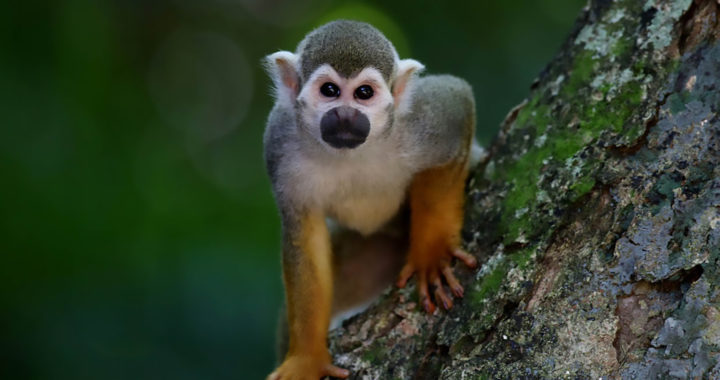Did humans come from monkeys? A popular interpretation of human evolution would probably affirm this notion. And some creationists would take this otherwise gross misinterpretation against the theory of evolution. Thus, in an attempt to challenge the theory, they often ask, “If we evolved from monkeys, then why are there still monkeys?”
This “monkey logic” of some creationists has been rampant in public discourse, including social media and other forums. To be fair, in realizing the grave error in reasoning, several creationist groups strongly urge their followers not to use such line of questioning. It remains popular among average creationists nonetheless.
Did We Come From Monkeys? Why Do Monkeys Still Exist?
But we did not come from monkeys. This is actually one of the most common misunderstandings about the entire theory of evolution and the specific theory of human evolution. Paula Kover, a reader in biology and biochemistry at the University of Bath, clarified that the great-great-great-ancestor of humans was not a monkey.
Evolution theory indicates that humans share a common ancestor with monkeys and apes. And among other species, these two are close relatives of Homo sapiens.
Furthermore, in her blog article, Jennifer Raff, anthropological geneticist and assistant professor at the University of Kansas, explained that the popular use of the category “monkey” is paraphyletic and a colloquial term, not a scientific taxonomy. This means that people have become accustomed to designating the word “monkey” to any ape-like or primate-like animals.
Raff also clarified that evolution does not work in a linear fashion. A species that has undergone evolution does not necessarily replace its antecedent. Consider a human family tree as an analogy. Raff illustrated that siblings both descended from the same parents, yet they exist at the same time and none of them replaced each other.
It is important to note that new species evolve by diverging from established ones, specifically if this new species form a population isolated from the antecedent branch and acquire sufficient differences to remain forever distinct.
Taking into consideration the process of adaptation and natural selection transpiring over million years, the parent species may survive indefinitely or it may become extinct.
What is the Starting Point of Human Evolution?
However, the aforementioned analogy from Raff also means that humans, monkeys, and apes descended from the same parent species. Evolutionary biologists agree that this parent species or common ancestor would be a small-bodied primate or ape-like species commonly referred to as hominoidae or hominid.
An earlier literature review by M. Ruvolo nonetheless reported that molecular and genetic evidence revealed that humans are only one of the species produced by hominoid evolutionary radiation. Other species that branched out from a common ancestor include common and pygmy chimpanzees, gorillas, orangutans, and lesser apes.
Some scientists now ascribe the term “ape” to all members of the superfamily Hominoidea, including humans. Furthermore, some biologists and primatologists refer to apes that are not human as non-human apes.
Remember that the topic of human evolution typically focuses on the evolutionary history of primates, specifically the genus Homo and the emergence of Homo sapiens as a distinct species of hominids or non-human apes.
There are several studies conducted to trace back the evolutionary route of humans. In his journal article, Henry H. Q. Heng mentioned that the study of human evolution involves different scientific disciplines, including physical anthropology, primatology, archaeology, paleontology, ethology, linguistics, evolutionary psychology, embryology, and genetics.
Nonetheless, human evolution is a theory. Creationists would debunk this by saying that it is just a theory. Remember that people generally use the word “theory” in everyday conversation to refer to assumptions or untested hypotheses. This is not the case in scientific terms.
A scientific theory typically means a well-substantiated explanation of some aspect of the natural world that sits above laws, inferences, and tested hypotheses.
In summary, when confronted with the question, “If we evolved from monkeys, then why are there still monkeys,” the best answer is to simply dismiss that humans evolved from monkeys. The theory of human evolution explains that humans share a common ancestor with apes and monkeys. This ancestor lived millions of years ago and over time, the species diverged, forming several branches of different species of hominid.
FURTHER READINGS AND REFERENCES
- Heng, H. H. Q. 2009. “The Genome-Centric Concept: Resynthesis of Evolution Theory.” BioEssays. 31(5): 512-525. DOI: 1002/bies.200800182
- Raff, J. 2015. “Why There Still Are Monkeys: Lessons Learned From Teaching Evolution In Kansas.” The Evolution Institute. Available online
- Ruvolo, M. 1997. “Genetic Diversity in Hominoid Primates.” Annual Review of Anthropology. 26: 515-540. DOI:1146/annurev.anthro.26.1.515

